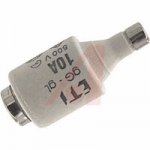I am looking at a series of disconnects that were apparently CE marked at one time. The same product line no longer has the CE mark. The reasoning was that the Fuses (CC and J-type for example) are not tested to IEC standards, but are tested to UL standards.
Does this mean that no Disconnect manufactured to be used in the United States can bear the CE Marking? Does a disconnect have to designed and tested with IEC Fuses to bear a CE Marking?
Does this mean that no Disconnect manufactured to be used in the United States can bear the CE Marking? Does a disconnect have to designed and tested with IEC Fuses to bear a CE Marking?


